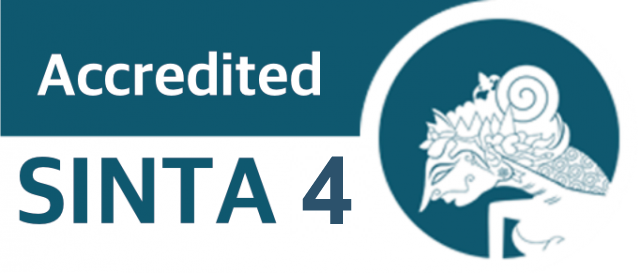A Life Lost, A Lesson Learned: Ecological and Emotional Impacts of a White-Throated Kingfishers Death
DOI:
10.29303/jpm.v20i7.10116Published:
2025-11-23Issue:
Vol. 20 No. 7 (2025): in ProgressKeywords:
Conservation; Ecological Imbalance; Emotional Impact; White-Throated Kingfisher; Wildlife-Human InteractionsArticles
Downloads
How to Cite
Downloads
Metrics
Abstract
This study presents a reflective account of a personal encounter with a dead White-Throated Kingfisher (Halcyon smyrnensis) during fieldwork, highlighting the ecological and emotional implications of its death. The incident, likely attributed to heat stress exacerbated by climate change, serves as a poignant reminder of the vulnerability of even resilient species to human-induced environmental pressures. Through a species profile, analysis of environmental stressors, and exploration of anthropogenic threats, this study underscores the urgent need for conservation efforts, climate action, and habitat protection. The emotional impact of the encounter emphasizes the importance of recognizing the intrinsic value of wildlife and the interconnectedness of human and environmental well-being. This research aims to contribute to a deeper understanding of the complex relationships between humans and wildlife, inspiring collective action to mitigate the pressing environmental challenges of our time.
References
J. Beilby, "The behavioural biology of hornbills, toucans, and kingfishers," in The Behavioural Biology of Zoo Animals, CRC Press, 2022, pp. 185-196.
C. T. Shifa et al., "Kingfisher in Mangroves: Unveiling Ecological Insights, Values, and Conservation Concerns," in Mangroves in a Changing World: Adaptation and Resilience, Cham: Springer Nature Switzerland, 2024, pp. 111-123, doi: 10.1007/978-3-031-67691-8_8.
J. Borah, "Occupancy pattern and food-niche partitioning among sympatric kingfishers in Bhitarkanika mangroves, Orissa," M.S. thesis, Wildlife Institute of India, 2011.
Ç. H. Şekercioğlu et al., "Avian biodiversity collapse in the Anthropocene: drivers and consequences," Frontiers in Ecology and Evolution, vol. 11, p. 1202621, 2023, doi: 10.3389/fevo.2023.1202621.
Q. Zhang et al., "Avian responses to an extreme ice storm are determined by a combination of functional traits, behavioural adaptations and habitat modifications," Scientific Reports, vol. 6, no. 1, p. 22344, 2016, doi: 10.1038/srep22344.
S. R. Conradie et al., "An evaluation of a biophysical model for predicting avian thermoregulation in the heat," Journal of Experimental Biology, vol. 226, no. 15, jeb245066, 2023, doi: 10.1242/jeb.245066.
E. J. Cunningham et al., "The incursion of Highly Pathogenic Avian Influenza (HPAI) into North Atlantic seabird populations: an interim report," Seabird, vol. 34, pp. 67-73, 2022, doi: 10.61350/sbj.34.67.
BirdLife International, "Species factsheet: White-throated Kingfisher Halcyon smyrnensis," 2016, accessed: Jun. 19, 2025. [Online]. Available: (https://datazone.birdlife.org/species/factsheet/white-throated-kingfisher-halcyon-smyrnensis 19/06/2025).
BirdLife International, "IUCN Red List for birds," 2025, accessed: Jun. 19, 2025. [Online]. Available: (https://datazone.birdlife.org).
BirdLife International, accessed: Jun. 19, 2025. [Online]. Available: (https://datazone.birdlife.org/search?cameraPosition=-108.80674942273464,68.85127445777366,108.8067494227347,49.93648830957105&species=%5B%7B%22id%22%3A1016514%2C%22name%22%3A%22Whitethroated%20Kingfisher%22%7D%5D&sitesEnabled=true&protectedAreasEnabled=true&limitSites=true).
E. U. Rehman et al., "Documenting Nesting and Breeding Ecology with Time Activity Budget of White-Throated Kingfisher (Halcyon smyrnensis) in Swat, Pakistan," Pakistan Journal of Zoology, vol. 54, no. 6, p. 2845, 2022, doi: 10.17582/journal.pjz/20210722100759.
P. F. Woodall and G. M. Kirwan, "White-breasted Kingfisher (Halcyon smyrnensis)," in Handbook of the Birds of the World alive, J. del Hoyo, A. Elliott, J. Sargatal, D. A. Christie, and E. de Juana, Eds., Barcelona: Lynx Edicions, 2016.
J. Terraube and V. Bretagnolle, "Top‐down limitation of mesopredators by avian top predators: a call for research on cascading effects at the community and ecosystem scale," Ibis, vol. 160, no. 3, 2018, doi: 10.1111/ibi.12581.
F. A. Egwumah, P. O. Egwumah, and D. I. Edet, "Paramount roles of wild birds as bioindicators of contamination," International Journal of Avian & Wildlife Biology, vol. 2, no. 6, pp. 194-199, 2017, doi: 10.15406/ijawb.2017.02.00041.
Q. H. Vuong and M. H. Nguyen, "Kingfisher: Contemplating the connection between nature and humans through science, art, literature, and lived experiences," Pacific Conservation Biology, vol. 30, no. 1, 2023, doi: 10.1071/PC23044.
C. T. Shifa et al., "Long-term anthropogenic stressors cause declines in kingfisher assemblages in wetlands in southwestern India," Ecological Indicators, vol. 155, p. 111062, 2023, doi: 10.1016/j.ecolind.2023.111062.
T. D. Costa, J. R. C. de Moraes, J. L. Timoteo, and J. Rosa, "Evaluation of the vulnerability of wild bird populations during heatwave events: implications for biodiversity conservation," Studies in Health Sciences, vol. 4, no. 4, pp. 1483-1502, 2023, doi: 10.54022/shsv4n4-027.
J. D. Siler, "Morbidity and mortality of birds at two wildlife rehabilitation centers," M.S. thesis, State University of New York College of Environmental Science and Forestry, 2004.
G. Seress and A. Liker, "Habitat urbanization and its effects on birds," Acta Zoologica Academiae Scientiarum Hungaricae, vol. 61, no. 4, pp. 373-408, 2015, doi: 10.17109/AZH.61.4.373.2015.
T. Bralower and A. Millet, Endangered Species and Ecosystems. Communities in Crisis: Student Voices on Climate Change, 2021.
H. Naher and N. J. Sarker, "Nest and nest characteristics of common kingfisher (Alcedo atthis) and white-throated kingfisher (Halcyon smyrnensis) in Bangladesh," Bangladesh Journal of Zoology, vol. 44, no. 1, pp. 99-109, 2016, doi: 10.3329/bjz.v44i1.30180.
S. O’Connor and J. O. Kenter, "Making intrinsic values work; integrating intrinsic values of the more-than-human world through the Life Framework of Values," Sustainability Science, vol. 14, no. 5, pp. 1247-1265, 2019, doi: 10.1007/s11625-019-00715-7.
Author Biographies
Deepshikha Shree, Department of Zoology, Dr. Shyama Prasad Mukherjee University
Md Abu Imran Mallick, 2Department of Zoology, West Bengal State University
Sima Paik, Department of Zoology, Dr. Shyama Prasad Mukherjee University
Kumari Komal, Department of Zoology, Dr. Shyama Prasad Mukherjee University
Shiladitya Acharjee, Wildlife researcher, Jamshedpur forest Division
Shaba Alam Ansari, Divisional Forest Officer, Jamshedpur forest Division
Smitha Pankaj, Regional Chief Conservator of Forest Singhbhum
License
Copyright (c) 2025 Deepshikha Shree, Md Abu Imran Mallick, Sima Paik, Kumari Komal, Shiladitya Acharjee, Shaba Alam Ansari, Smitha Pankaj

This work is licensed under a Creative Commons Attribution 4.0 International License.
The following terms apply to authors who publish in this journal:
1. Authors retain copyright and grant the journal first publication rights, with the work simultaneously licensed under a Creative Commons Attribution License 4.0 International License (CC-BY License) that allows others to share the work with an acknowledgment of the work's authorship and first publication in this journal.
2. Authors may enter into separate, additional contractual arrangements for the non-exclusive distribution of the journal's published version of the work (e.g., posting it to an institutional repository or publishing it in a book), acknowledging its initial publication in this journal.
3. Before and during the submission process, authors are permitted and encouraged to post their work online (e.g., in institutional repositories or on their website), as this can lead to productive exchanges as well as earlier and greater citation of published work (See The Effect of Open Access).











